- days
- hours
- minutes
- seconds
- until the next Le Cure. Get on your bike!
Le Cure's Climbs
Below you will find all the climbs that Les Curistas have ascended over the years.
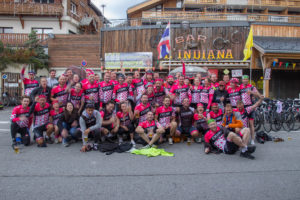
Alpe d’Huez
-
1850m
Approx. Elevation
-
13.8km
Approx. Distance
-
8.1%
Avg. Gradient
The 21 hairpins of the Alpe are Le Cure’s spiritual home. The Tour’s first visit to Alpe d’Huez was won by the legendary Fausto Coppi, since when the 13.8km, 8.1% climb – including a savage first 3km – has seen several epic stages, most notably in 1986 when Bernard Hinault and Greg LeMond crossed arm in arm. Winners also include the infamous Lance Armstrong and Marco Pantani and, most recently, Britain’s Geraint Thomas.
Including a double summit in 2019, Le Cure has climbed the Alpe 7 times and will return for our grand finale once again in 2022!
Le Cure climbed this mountain in the following years:
Cervinia
-
12km
Approx. Distance
-
7%
Avg. Gradient
Le Cure climbed this mountain in the following years:
Champex du Lac
-
1500m
Approx. Elevation
-
12km
Approx. Distance
-
7.2%
Avg. Gradient
Technically the Col de Champex, but everyone knows it as Champex du Lac. Cheekily billed as “a leg warmer” for day 1 of the 2020 edition, this is actually a 10km climb at 6% which tops out at 1,470m. The stunning azure blue lake is a staging post of the Tour de Mont Blanc, and the climb is a regular feature of the Tour de Suisse.
The decent back down to the valley floor was truly spectacular. Lunch by the Rhine wasn’t bad either. If only we didn’t have to do the Col de la Croix de Coeur in the afternoon.
Le Cure climbed this mountain in the following years:
Champillon Lac
-
2078m
Approx. Elevation
This probably wins the prize for Le Cure’s most obscure climb. It has not featured in the Tour or the Giro, but it certainly should not be underestimated. Tucked away in the northern Aosta Valley, this climb is accessible via a string of tiny roads dotted with Alpine villages. It tops out at 2,078m, after around 11km at an average around 6.5% average.
We tackled after chalking off the Col du Grand St Bernard in the morning, and it is perhaps most memorable for the utterly bizarre weather conditions of monsoon rain and blue skies seemingly alternating with the frequency of the hairpins.
Le Cure climbed this mountain in the following years:
Chiesa Verrogne
-
1595m
Approx. Elevation
-
12km
Approx. Distance
-
7.5%
Avg. Gradient
Le Cure climbed this mountain in the following years:
Cime de la Bonette
-
2802m
Approx. Elevation
-
26km
Approx. Distance
-
6.4%
Avg. Gradient
The long climb to the summit of the Bonette is notable for two things – it’s the highest paved road in the Alps and the finish (built solely to achieve the aforementioned honour) is brutally steep. Despite being famous for its altitude the Bonette has only featured in the Tour four times. Presumably because the road doesn’t really go anywhere useful.
John-Lee Augustyn led over the summit the last time the Tour went over the Bonette (in 2008), but fell on the descent. Curistas were treated to altitude and views on a glorious day in 2017, thankfully with no tumbles on the way down.
Le Cure climbed this mountain in the following years:
Col de Bleine
-
1427m
Approx. Elevation
-
6km
Approx. Distance
-
6.5%
Avg. Gradient
Le Cure climbed this mountain in the following years:
Col de Buis
-
1196m
Approx. Elevation
-
13.4km
Approx. Distance
-
5.1%
Avg. Gradient
Le Cure climbed this mountain in the following years:
Col de Champ-Laurent
-
1116m
Approx. Elevation
-
10km
Approx. Distance
-
8.2%
Avg. Gradient
Forming the first part of a double ascent with the Col du Grand Cucheron, Le Cure will visit the Champ-Laurent for the first time in 2021. It has an easy side. Unfortunately that’s not the one we’re doing.
Le Cure climbed this mountain in the following years:
Col de Gueulaz (from Finhaut)
-
892m
Approx. Elevation
-
10.74km
Approx. Distance
-
8.3%
Avg. Gradient
Le Cure climbed this mountain in the following years:
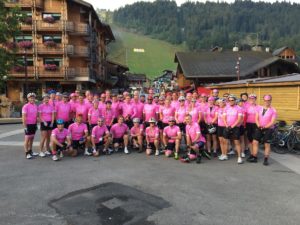
Col de Joux Plane
-
1691m
Approx. Elevation
The climb from Samoens featured on Le Cure in 2016 and will be back for Stage 1 in 2021. It’s a gruelling 11.6km with an average grade of 8.5% and a demanding maximum of 12.5%. Nestled in the shadow of Mt Blanc it is a truly beautiful mountain pass.
The Joux Plane has been used by the Tour 12 times since its first outing in 1978 and was the scene of an amazing chase by eventual winner Laurent Fignon in 1983. It was also on the Joux Plane that Floyd Landis made an extraordinary solo break in 2006 to win the stage. Unfortunately it was a little too extraordinary and he tested positive for testosterone a few days later.
Le Cure climbed this mountain in the following years:
Col de Joux-Verte
At 14.4km and a maximum gradient of 12.1% the Joux-Verte is another serious climb. In 2000 Lance Armstrong described a stage finishing with the Joux Plane as “the hardest day of my life – on a bike.” The enthusiastic can carry on up beyond the Col to the ski resort of Avoriaz, where there have been six summit finishes in the Tour where winners have included Andy Schleck in 2010 when he went on to win the race after Bertie Contador was disqualified. It was on the Joux-Verte in 2016 that Le Cure experienced its first rainstorm, making for treacherous conditions on the descent and well-earned beers in the bar.
Le Cure climbed this mountain in the following years:
Col de l’Arpettaz
-
1581m
Approx. Elevation
-
16.4km
Approx. Distance
-
7.1%
Avg. Gradient
Le Cure will take on this lesser known climb for the first time in 2021. The l’Arpettaz is not to be underestimated however – gradients of up to 12% and a staggering 42 hairpins await the Curistas.
Le Cure climbed this mountain in the following years:
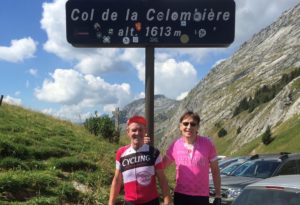
Col de la Colombière
-
1618m
Approx. Elevation
This 16km climb averages 6.8% but has a real sting in the tail as Curistas found out in 2016 and can look forward to again in 2021. The final 4km is barren and mountainous with gradients all above 9% and stretches at 11%.
The Colombière is a Tour regular, featuring 22 times, most recently in 2018, but its role is normally to sap the legs of the peloton before they head to more famous summit finishes. Some famous and infamous (Pantani, Landis) names have led over the Colombière, but the only Brit to do so was Barry Hoban back in 1968.
Le Cure climbed this mountain in the following years:
Col de la Croix de Coeur
-
1550m
Approx. Elevation
-
10km
Approx. Distance
-
8%
Avg. Gradient
Sitting high above Verbier at an impressive 2,174m, this is an unrelenting slog of a climb. 1,700 metres of ascent over 22 kilometres at a fairly steady 7-9%. Punchy. Le Cure took it on in glorious sunshine from the west on day 1 of the 2020 edition.
After having racked up a few sedate few kms after lunch beside the Rhine, the first stretch up of the climb up to La Tzoumaz was a wide, exceedingly well surfaced road (Switzerland after all). However, the paved ran out just after La Tzoumaz, and from there, we were treated to a compacted gravel track, with some paved remnants, which winds its way up through the forest before emerging above the tree line in traffic free bliss. An epic climax to day 1, and probably our toughest opening start since the infamous Iseran on day 1 in 2015
The eastern ascent of the col featured in the Tour de France in 2009 (Bertie Contador in 2009), but the rumours are that the harder western face is on the cards in the near future. The ASO route planners are obviously following our Strava account.
Le Cure climbed this mountain in the following years:
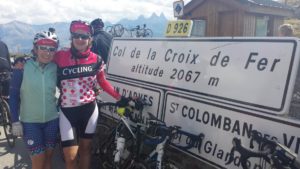
Col de la Croix de Fer
-
2068m
Approx. Elevation
At 2,067m high, the Croix de Fer deserves to be taken seriously. The climb is the best part of 30km long with sections above 9%. The Croix de Fer featured on Le Cure in 2016 and will sap the legs of Curistas once again on Stage 4 in 2021 to make sure everyone is nicely warmed up for Alpe d’Huez.
The Croix de Fer has a rich Tour history. It has featured 20 times starting in 1947. Such luminaries as Gino Bartili (1948), Fausto Coppi (1952) and Bernard Hinault (1986) have led over the top.
Le Cure climbed this mountain in the following years:
Col de la Forclaz (from Martigny)
-
1054m
Approx. Elevation
-
15.45km
Approx. Distance
-
6.8%
Avg. Gradient
Le Cure climbed this mountain in the following years:
Col de la Lombarde
-
2351m
Approx. Elevation
-
19.5km
Approx. Distance
-
7.2%
Avg. Gradient
Departing Vinadio in glorious sunshine at the bottom of the Lombarde on Stage 2 in 2017, Curistas could not have imagined what awaited them at the summit – driving hail, freezing temperatures and a wind which blew Debbie McMenamin clean off the road (thankfully without harm).
Surprisingly, what is – hail aside – a gorgeous climb with some testing, steep sections has only featured in the Tour de France once (in 2008).
Le Cure climbed this mountain in the following years:
Col de la Loze (from Courchevel)
-
551m
Approx. Elevation
-
8.8km
Approx. Distance
-
6.3%
Avg. Gradient
Le Cure climbed this mountain in the following years:

Col de la Madeleine
Curistas tackled the Madeleine for the second time in 2019 (previously 2015). Bradley Wiggins described the 25km climb as “beautiful, but heartbreaking” and it was after the Madeleine that Jens Voight famously coined the phrase, “shut up legs.”
A 26-time Tour favourite, Pierre Rolland described the Madeleine as “…one of the iconic Tour climbs. It’s very long, and very tough.” Which just about sums it up.
The route from Feissons-sur-isere to 2,000m has a steep start, a steep finish and steep sections in the middle.
Le Cure climbed this mountain in the following years:
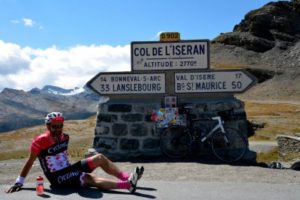
Col de l’Iseran
Ascended from both sides by Le Cure (2015, 2018), the Iseran is the highest mountain pass and longest climb in Europe. Reaching an altitude of 2,770m the climb offers stunning views over the ski resort of Val d’isere… when you can see. In 2018 Curistas reached the ascent in freezing fog, rain and occasional snow flurries. Thankfully there is a handy cafe at the top!
The Iseran first featured in the Tour in 1938 and was home to the first mountain time trial in 1939. It has only been included five times since, but will return for the Tour’s 100th edition in 2019.
Le Cure climbed this mountain in the following years:
Col de Romme
-
1297m
Approx. Elevation
-
9.3km
Approx. Distance
-
8.7%
Avg. Gradient
Part of a double whammy with the Colombiere, the Romme effectively ended the Tour de France hopes of Bradley Wiggins and one Lance Armstrong in 2009 when they both cracked and slid down the GC rankings.
Gradients of up to 13% await the Curistas during 2021’s Stage 1.
Le Cure climbed this mountain in the following years:
Col de Sarenne
-
1999m
Approx. Elevation
-
22km
Approx. Distance
-
5.7%
Avg. Gradient
Don’t let the average gradient lull you into a false sense of security. The Sarenne might allow riders some respite in the middle, but is a brute of a climb which finally spits you out above Alpe d’Huez. Curistas crossed the summit on Stage 4 in 2019 knowing that the descent would only deliver them to the bottom of the traditional route up the Alpe.
In 2013 the Tour took on the double ascent and Chris Froome was able to pull further ahead of his rivals on the stage (despite cheating and being docked 20 seconds) en route to winning the Yellow Jersey for the first time.
Le Cure climbed this mountain in the following years:
Col de Vars
-
2109m
Approx. Elevation
-
14.6km
Approx. Distance
-
5.5%
Avg. Gradient
The fun really begins on the Col de Vars with about 5km to go. After a very benign ride to that point, you are then faced with long stretches in double figures. Le Cure took on the Vars after the Bonette during Stage 3 of 2017 so there were some tired bodies flogging up the hill – and grateful for the following descent to finish the day.
The Tour has crossed the Col de Vars an impressive 22 times, most recently in 2019.
Le Cure climbed this mountain in the following years:
Col de Vence
-
963m
Approx. Elevation
-
18.9km
Approx. Distance
-
5.1%
Avg. Gradient
Le Cure climbed this mountain in the following years:

Col des Aravis
-
1486m
Approx. Elevation
-
18.8km
Approx. Distance
-
4.6%
Avg. Gradient
Featuring on Le Cure in 2016 and 2018, the Aravis is a beautiful climb into Alpine pastures. While perhaps not an epic Col by Tour de France standards, it has been crossed by the Tour an astonishing 40 times.
For both of Le Cure’s outings, we started in La Clusaz which is where the proper climbing starts with gradients of 5-7% up to the summit.
Le Cure climbed this mountain in the following years:
Col des Montets (from Le Chatelard)
-
359m
Approx. Elevation
-
6.85km
Approx. Distance
-
5.2%
Avg. Gradient
Le Cure climbed this mountain in the following years:
Col des Saisies
-
1650m
Approx. Elevation
-
14.8km
Approx. Distance
-
5.0%
Avg. Gradient
Le Cure climbed this mountain in the following years:
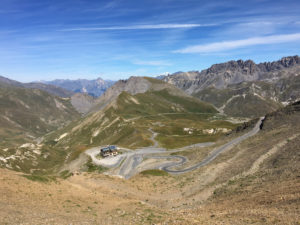
Col du Galibier
The Tour has been ascending the Galibier since 1911, which at an imposing altitude of 2,642m, makes it one of the most revered climbs in cycling. The Galibier has featured on the Tour a staggering 59 times. Le Cure has ascended Galibier in both directions and, alongside the Col du Telegraphe, returned in Stage 3 of Le Cure 2019 with a spectacular thunder storm at the top.
“Oh, Sappey ! Oh, Laffrey ! Oh, Col Bayard ! Oh, Tourmalet ! I will not fail in my duty in proclaiming that next to the Galibier you are as weak as dishwater: before this giant there’s nothing one can do but doff one’s hat and bow down low.” – Henri Desgrange
Le Cure climbed this mountain in the following years:
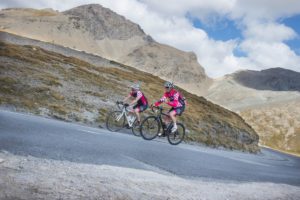
Col du Glandon
There’s no getting away from it: the top of the Glandon is a brute. Le Cure (2015, 2018) has twice climbed all 21.3km of the Glandon. The average gradient of 7% does nothing to prepare riders for the last 3km though, which are >11%.
While never a summit finish, the Glandon has 14 times appeared on the Tour often in conjunction with the Croix de Fer.
Le Cure climbed this mountain in the following years:
Col du Grand Cucheron
-
1118m
Approx. Elevation
-
3.5km
Approx. Distance
-
8.7%
Avg. Gradient
Coming in the middle of Stage 3, 2021, Le Cure will join the Grand Cucheron around 3.5km from the summit. Far from being able to enjoy a short climb, the Cucheron will come as a sting in the tail for the Curistas who will just have ascended 10km of the Champ-Laurent.
Le Cure climbed this mountain in the following years:
Col du Grand Saint Bernard (from Aosta)
-
1893m
Approx. Elevation
-
35km
Approx. Distance
-
5.4%
Avg. Gradient
Le Cure climbed this mountain in the following years:
Col du Grand St Bernard
-
2469m
Approx. Elevation
-
25km
Approx. Distance
-
7%
Avg. Gradient
Standing at a massive 2,469m, the Col du Grand St Bernard is one of the most ancient passes through the western Alps, and the home of the eponymous dog. It is also the 4th highest col in Le Cure history, and a 30km marathon at an average of around 6%. It has featured in the Tour de France on 5 occasions, the first time being in 1949, when the Italian legend Gino Bartali was first over the summit. He would go onto repeat his exploits the following day over the (marginally) smaller Col du Petit St Bernard.
Curistas took it on on day 2 of the 2020 edition. After a morning decent from Verbier the first stretch of the climb was a fairly nondescript dual carriageway interspersed with long tunnels. However, with 7.5km to go, which is the point where the vast majority of the motor traffic peels off into the tunnel, this is a truly majestic and spectacular climb. From there the gradient ramps up to a steady 8%, and the views both back down the valley and towards Mont Velan are spectacular. We were welcomed at the summit by a crystal blue glacial lake before, we enjoyed one of the most glorious descents in world cycling into the Aosta valley.
Le Cure climbed this mountain in the following years:
Col du Petit Saint Bernard
The Petit San Bernard tops out at fairly hefty 2,188m. It was first crossed by the Tour de France in 1949, when it was led over by the legendary Gino Bartali.
Le Cure crossed this not so small pass on day 1 of the 2019 edition. The grand depart that year had been from Courmayeur, in the Aosta valley (our first ever non-French start), and before leaving Italy we had already chalked off the super punchy Colle San Carlo. From there we descended into the ski resort of La Thuile before tackling the western side of the Petit San Bernard. The col straddles the Italian / French border, and whilst the stats say that it is only 6% gradient the fact that the last couple of km are over 2,000m means that it was no easy ride.
Le Cure climbed this mountain in the following years:
Col du Petit St Bernard (from Bourg Saint-Maurice)
-
1370m
Approx. Elevation
-
30km
Approx. Distance
-
4.6%
Avg. Gradient
Le Cure climbed this mountain in the following years:
Col du Pré
-
1703m
Approx. Elevation
-
12.2km
Approx. Distance
-
7.9%
Avg. Gradient
In 2018, Curistas took on the Cormet de Roselend via the Col du Pré. This really is a climb of two halves – a gentle start out of the beautiful town of Beaufort ramps up to long stretches in double figures ahead of the summit. Riders should have been rewarded with spectacular views over the Lac de Roselend, but poor visibility ruined the treat. Next time!
Le Cure climbed this mountain in the following years:
Col du Telegraphe
A Tour de France classic, it has featured in the Grand Boucle on no less than 20 occasions. The most recent man (2017) to be first over the top being the ski jumper turned TDF contender, Primoz Roglic. From Saint Michel de Maurienne it is 11.3km climb at an average of 7.3%. It is notorious for its blind hairpins, and the last 1km which averages just under 10%. The summit, sitting above the town of Valloire, tops out at 1,570m.
Le Cure went up and over this legendary climb in 2016 and again in 2019, and on both occasions it was the “appetiser” for the Galibier.
Le Cure climbed this mountain in the following years:
Col d’Allos
2017 was Le Cure’s year of the southern Alps. Curistas had kicked off day 1 in the ski resort of Valberg before heading over the Col des Champs and then onto the Col d’Allos.
Starting from Colmars, the climb is 23.6 km gaining 1,005m, resulting in an average of 4.3%. However, these stats do not tell the whole story. The first first 11km are at an average of about 2.5%, and therefore barely scratch the side. The next 12.5km are a different matter, averaging 7% up to the summit at 2,247m
The Col d’Allos has featured in the Tour de France on 9 occasions, most recently in 2015, but most famously in 1975. On that occasion the legendary Eddy Merckx summited first, but before the stage was done, he cracked on the final climb of the day up to the ski station at Pra Loup. It was the beginning of the end of Eddy’s domination of the Tour.
Le Cure climbed this mountain in the following years:
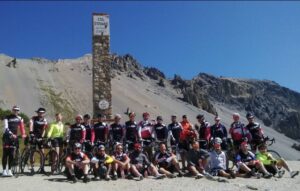
Col d’Izoard
The Izoard has featured in the Tour an impressive 34 times, with the mountain home to some epic battles including those between Coppi and Bartali. Despite that the Izoard has only seen one summit finish (in 2017), which was won by Warren Barguil. Le Cure will take on the Izoard for the third time in 2022 and for many Curistas has been one of the toughest climbs.
As if the 31.5km climb to 2,360m isn’t enough to contend with, the brief downhill section in the barren and windswept Casse Déserte only serves to sap the legs of riders before the punishing run to the summit.
Le Cure climbed this mountain in the following years:
Colle della Maddalena
-
1996m
Approx. Elevation
-
18.3km
Approx. Distance
-
4.1%
Avg. Gradient
A long but mostly gentle climb was only dampened by a passing rain storm. Curistas were rewarded though as the rain cleared up in time for a fast-paced 30km downhill to the bottom of the Lombarde.
Le Cure climbed this mountain in the following years:
Colle Saint Pantaleon
-
1668m
Approx. Elevation
-
11km
Approx. Distance
-
6.5%
Avg. Gradient
Le Cure climbed this mountain in the following years:
Colle San Carlo
-
1971m
Approx. Elevation
-
10.5km
Approx. Distance
-
10.0%
Avg. Gradient
First out of the blocks in 2019 the San Carlo is not for the faint of heart. Climbing high above the Aosta Valley, Curistas found the San Carlo a relentless start to Le Cure – belying the stated average of 10% the gradient barely seemed to drop below double figures but had long stretches of 13%+.
The Giro d’Italia went up the San Carlo in 2019… with snow still on the side of the road. Richard Carapaz took the stage and moved into the lead of the race, which he would go on to win.
Le Cure climbed this mountain in the following years:
Cormet de Roselend
A total climb of 1,227m over 20km, the Roselend lies between the Beaufortain and Mont Blanc mountain ranges. The Roselend has featured in the Tour 12 times, including 2018 and 2019. Le Cure crossed the Roselend in 2018, but poor weather meant we missed the stunning views from the Roselend Dam.
It was here in 1996 that the now disgraced Johan Bruyneel rode off a cliff and somehow lived to tell the tale.
Le Cure climbed this mountain in the following years:
Cote de Bonvillard
-
755m
Approx. Elevation
-
6.0km
Approx. Distance
-
6.8%
Avg. Gradient
A relative hors d’oeuvre of a climb, the Bonvillard will be warming up some sore muscles on Stage 3 in 2021 before the real business of the day begins.
Le Cure climbed this mountain in the following years:
Courchevel (from Grand Carrey)
-
880m
Approx. Elevation
-
13.4km
Approx. Distance
-
6.6%
Avg. Gradient
Le Cure climbed this mountain in the following years:
Croix de Coeur (from Verbier)
-
670m
Approx. Elevation
-
7km
Approx. Distance
-
9.6%
Avg. Gradient
Le Cure climbed this mountain in the following years:
La Colle sur Loup
-
194m
Approx. Elevation
-
2km
Approx. Distance
-
9.8%
Avg. Gradient
Le Cure climbed this mountain in the following years:
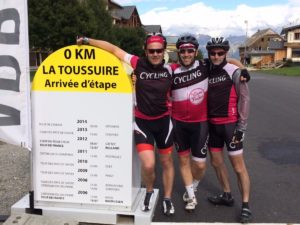
La Toussuire
-
1705m
Approx. Elevation
The 6% average gradient of the Toussuire can lead you into a false sense of security. There are some flatter sections, but with the climb spanning 18.5km there’s plenty of time for some tough, steep sections as well and it was a tough opener for Curistas on Stage 3, 2015.
La Toussuire has a limited, but infamous, Tour history: it was here that Floyd Landis famously cracked in 2006, before his “miraculous” recovery and attack on the Joux Plane the following day. Michael Rasmussen (ahem) went on to take the stage at the Toussuire summit finish. In 2012 Pierre Rolland won Stage 11, but the stage is more famous for Chris Froome appearing to desert his team leader, Bradley Wiggins, in pursuit of a stage win, before being given orders by Team Sky to wait for the eventual yellow jersey. In 2015, Nairo Quintana soloed to victory, but couldn’t overhaul race winner Chris Froome in the overall standings.
Le Cure climbed this mountain in the following years:
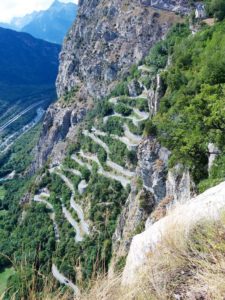
Lacets de Montvernier
-
3.7km
Approx. Distance
-
8%
Avg. Gradient
By Le Cure standards, this is a tiddler – 3.7km at 8% – but what a tiddler it is.
Curistas have been up (2015, 2019) and down (2016) the “shoelaces”, cameras at the ready.
Le Cure climbed this mountain in the following years:
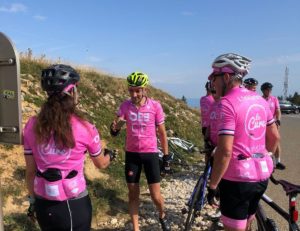
Le Semnoz
Soaring high above the west bank of Lake Annecy, the Semnoz was a tough start to Le Cure 2018. One turn out of town and it’s a 17.4km climb to the summit over an average gradient of 7% with a steep slog to the top. The road eventually snakes its way up above the woods and Curistas were rewarded with spectacular views of the lake.
Semnoz hosted a summit finish in the 2013 Tour. Nairo Quintana won, putting 29 seconds into third placed Chris Froome. However Froome was a comfortable 5 minutes ahead in the overall classification and went on to claim his first yellow jersey. Semnoz has only featured in the Tour on two other occasions – when the peloton went on strike in 1998 in the wake of the Festina affair and for a short mountain time trial won by Alberto Contador in 2009.
Fun fact: Semnoz got its name from the Romans – who thought the mountain looked like a salmon.
Le Cure climbed this mountain in the following years:
Les Arcs
From Bourg Saint Maurice the club up to the ski station at Les Arc is 22km at an average of around 7%. Cursitas took it on as the third col of the day on day 1 of the 2019 edition.
The climb is perhaps most famous as being the breaking point in Miguel Indurain’s domination of the Tour de France. The big man was aiming for a record 6th GC victory, but the cracks appeared at 1,600m and he was dropped and never quite recovered in the overall standings.
Le Cure climbed this mountain in the following years:
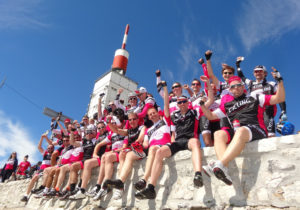
Mont Ventoux
Ventoux – the Giant of Provence at 1,912m – will always have a special place in Curistas’ hearts. Back in 2014 it was our first ever climb. 27 nervous Curistas took on one of the Tour’s toughest climbs with no idea what to expect. The classic route is 21.8km and an average gradient of 7.5% with long sections over 10%.
It was here in 1967 that Britain’s Tom Simpson collapsed and died on the mountainside, still clipped into his pedals. Note to Curistas: amphetamines and cycling don’t mix. Chris Froome won on Ventoux in 2013 en route to his maiden Tour victory.
Le Cure climbed this mountain in the following years:
Montée à Gourdon
-
738m
Approx. Elevation
-
16.7km
Approx. Distance
-
3.4%
Avg. Gradient
Le Cure climbed this mountain in the following years:
Montée d’Hautecour (from Moûtiers)
-
695m
Approx. Elevation
-
9.68km
Approx. Distance
-
7.2%
Avg. Gradient
Le Cure climbed this mountain in the following years:
Montee de Pila
-
1900m
Approx. Elevation
-
19.8km
Approx. Distance
-
7.2%
Avg. Gradient
Le Cure climbed this mountain in the following years:
Montée des Versants du Soleil (from Aime)
-
514m
Approx. Elevation
-
9.15km
Approx. Distance
-
5.5%
Avg. Gradient
Le Cure climbed this mountain in the following years:
Nendaz (from Isérables)
-
447m
Approx. Elevation
-
7.73km
Approx. Distance
-
8.8%
Avg. Gradient
Le Cure climbed this mountain in the following years:
Sestriere
-
2035m
Approx. Elevation
-
11.5km
Approx. Distance
-
5.9%
Avg. Gradient
2017 was the first time Le Cure finished away from Alpe d’Huez, choosing instead the Italian ski resort of Sestriere. While not as iconic as the Alpe, having already crossed the Izoard and the ascent to Montgenevre during the stage Sestriere was still a tough and fitting grand finale. The last night party didn’t disappoint either.
Sestriere has featured in both the Tour and the Giro (as far back as 1911 when it was the first climb above 2000m to be included in the race). One Lance Armstrong rode clear on the climb in 1999 to win the stage and start his, er, dominance of the Tour.
Le Cure climbed this mountain in the following years:
Signal de Bisanne
-
1941m
Approx. Elevation
-
14.4km
Approx. Distance
-
8.5%
Avg. Gradient
Curistas will be rewarded for the steep finish with panoramic views and a stunning vista of Mt Blanc.
Le Cure climbed this mountain in the following years:
Verbier (from Le Châble)
-
656m
Approx. Elevation
-
8.6km
Approx. Distance
-
7.6%
Avg. Gradient
Le Cure climbed this mountain in the following years:
Please let us know if you notice any errors on the page by clicking here.